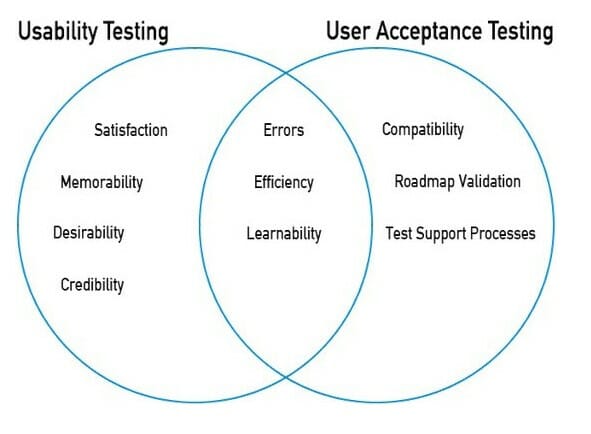In my last blog, I talked about User Acceptance Testing which is kind of the final stage before release to production. Let’s look into something that might be considered the first stage, Usability testing.
What is Usability testing?
Usability testing or User Experience Testing (UX), is a method to measure how user-friendly any software application is. It’s all about getting real people (end-users) to interact with a website, app, or other digital product and observing their behavior and reactions to it. This testing method is recommended during the initial design phase of SDLC, which gives more visibility into the expectations of the users.
The goal of usability testing is to reveal areas of confusion and uncover opportunities to improve the overall user experience.
When to perform Usability testing?
Usability testing should be performed in the middle and the end of the design process.
It’s recommended to incorporate usability testing into sprint cycles which allows real end-users to interact with the product in an early phase. In an agile development cycle, this will give the team the opportunity to register the finding into the product backlog for future sprints.
Usability testing which is conducted late in the process can be a risk of developing a good product that people cannot use or don’t want to use which means spending time and money developing a solution without understanding the problem.
Who should test?
The participants should belong to the target audience of the application, users who use and will use the application frequently. There are different opinions on how many participants are needed for a usability test but one test is never sufficient and will not provide enough data to give the team answers.
The actual number of required participants depends on the complexity of the application but keep in mind, increasing the number of participants will result in increased cost, planning, management and data analysis. 5 participants is a good enough number to start with.
Usability testing advantages
Let’s look at some advantages usability testing will provide with.
- It helps uncover usability issues before the product is marketed.
- It helps improve end-user satisfaction
- It makes your system highly effective and efficient
- It helps gather true feedback from your target audience who actually use the system during a usability test.
Differences between Usability Testing and User Acceptance Testing
Some people believe that usability testing and user acceptance testing are the same, there is some overlap between these two methods. However, both methods are different and serve different purposes.
Usability testing is to be performed to ensure that the users can use the product with ease and that it is ready to deliver. The participants try to find flaws in the usability of the product.
User Acceptance Testing is performed by the client to make sure the product is working fine and matching with agreed-upon requirements.

Usability testing methods
There have been developed many methods and techniques for usability testing over the years, lets’s take a quick look at a few of the methods that can be helpful.
- Guerilla testing: The simplest form of usability testing. Guerrilla testing means going into a public place to ask people about your prototype. Test participants are chosen randomly.
- Lab usability testing: Testing run in special environments and is supervised by a moderator. A moderator is a professional who is looking to obtain feedback from live users.
- Unmoderated remote usability testing: Unmoderated remote usability testing occurs remotely without a moderator. It offers quick, robust, and inexpensive user testing results to be used for further analysis. Test participants are asked to complete tasks in their own environment using their own devices and without a moderator present, which leads to the product being used naturally.
- Session recording: Session recording is a method of recording the actions that real (but anonymized) users take while they interact with a site. Session recording data helps to understand what features are the most interesting for the users (via heatmap analysis) as well as what interaction problems users face while they interact with your product.

 English | EN
English | EN 
